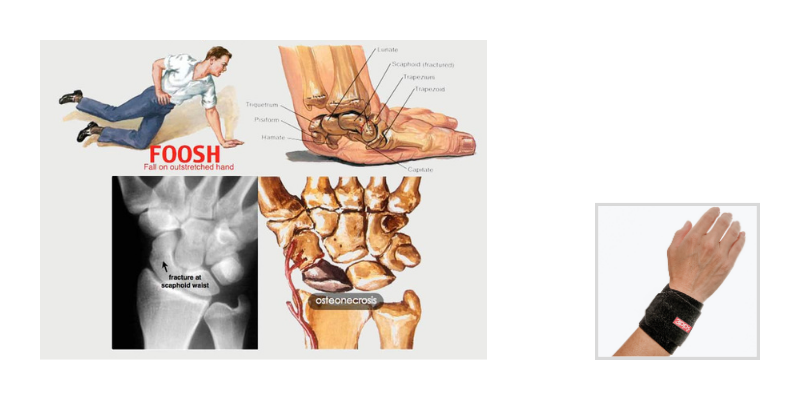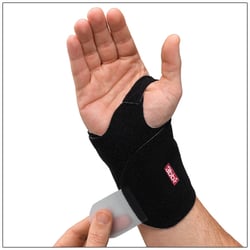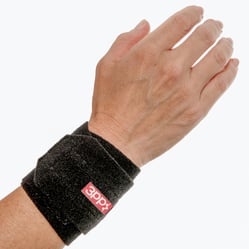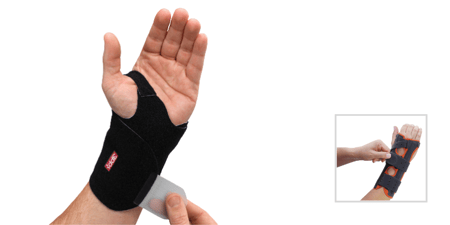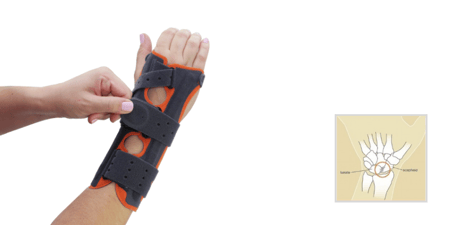There are a variety of wrist injuries that can occur from a traumatic fall on an outstretched hand. These injuries are termed FOOSH (fall on an outstretched hand) injuries. Probably the most well-known FOOSH is a distal radius fracture, which is identified and treated first by a physician. As a health care professional, you may be seeing an increase in referrals for wrist pain from falls this time of year, now may be a good time to review the clinical signs used to find other FOOSH injuries.
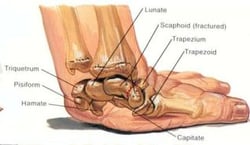
Scaphoid Fractures
Scaphoid fractures occur with wrist hyperextension combined with radial deviation. The scaphoid sits in the anatomical snuffbox at the radial wrist and at the base of the thumb. There can be a suspicion for a scaphoid fracture even after normal initial radiographs because this particular fracture is said to not always immediately show on standard radiographs. Clinical signs to help identify a scaphoid fracture if there is pain at the radial wrist include tenderness with palpation to the scaphoid, axial compression of the thumb, and a history of a fall on a hyperextended wrist.
| Are you a patient or consumer? Click Here to view wrist braces on our consumer site |
Scapholunate (SL) Ligament Injury
An injury or tear of the SL ligament can occur with a FOOSH or a sudden load on the wrist. An injury to this ligament will likely cause dorsal radial wrist pain and swelling. Two useful clinical signs for a suspected SL ligament injury are palpation to the area just distal to Lister’s tubercle on the dorsal radius (with sharp pain indicative of SL injury) and the scaphoid shift test. To perform the scaphoid shift test, apply pressure to the volar prominence of the scaphoid while moving the wrist from ulnar deviation to radial deviation with slight wrist flexion. A painful clunk with symptom reproduction when pressure is removed is usually indicative of a ligament injury, but be sure to check the non-involved side for baseline ligament laxity information.
Triangular Fibrocartilage Complex (TFCC) Injury
An injury to the TFCC can occur with a FOOSH with excessive forearm rotation and causes ulnar sided wrist pain. If an injury to the TFCC is suspected, check the ulnar fovea sign and the TFCC load test. The ulnar fovea sign is performed by pressing your thumb between the ulnar styloid process and flexor carpi ulnaris tendon and between the ulnar head and pisiform. This sign is positive if this replicates the individual’s pain. The TFCC load test is performed by loading the wrist with ulnar deviation, then moving it volarly and dorsally. A positive test reproduces pain and symptoms.
The 3pp Wrist Wrap NP and the 3pp Wrist POP are examples of supports that can help individuals recover from wrist pain related to strains and sprains, post-operative, or post casting after a FOOSH.
3pp® Wrist Wrap NP
3pp® Wrist POP Splint
Patients and Consumers
Are you looking for more information on wrist braces?
Blog References: Click to see the references for this blog post

